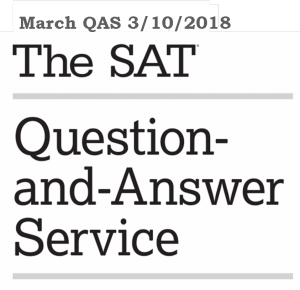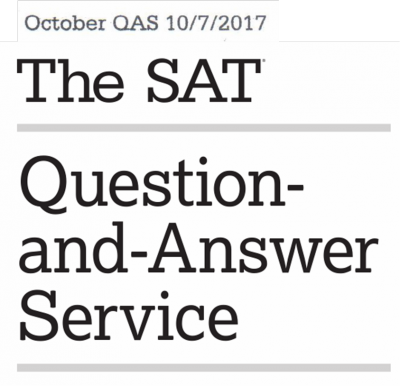Try the following SAT math question that tests an understanding of when functions are defined.
For what values of $a$ is the expression $\sqrt{9-a^2}$ a real number?
- $\quad |a| \geq 9$
- $\quad |a| \leq 9$
- $\quad |a| \geq 3$
- $\quad |a| \leq 3$
Online SAT Prep the right way
Try the following SAT math question that tests an understanding of when functions are defined.
For what values of $a$ is the expression $\sqrt{9-a^2}$ a real number?
Here is the link to the playlist of videos that explain all of the math questions in the 2018 March SAT Question and Answer Service test. The playlists are separated by sections. Section 3 of the math section does not allow use of calculator, whereas the calculator is permitted in Section 4 of the math section.

Try the following SAT math question that tests your understanding of simplifying complex number expressions.
$$ i^{10}+i^{11}+i^{12}+i^{13}$$
Which of the following is equivalent to the complex number expression shown above? (Note: $i =\sqrt{-1}$)
Here is the link to the playlist of videos that explain all of the math questions in the 2017 PSAT Saturday test that was conducted on the 14th of October: 2017 PSAT Saturday Test Video Explanations.

Here is the link to the playlist of videos that explain all of the math questions in the 2017 October SAT Question and Answer Service test. The playlists are separated by sections. Section 3 of the math section does not allow use of calculator, whereas the calculator is permitted in Section 4 of the math section.
